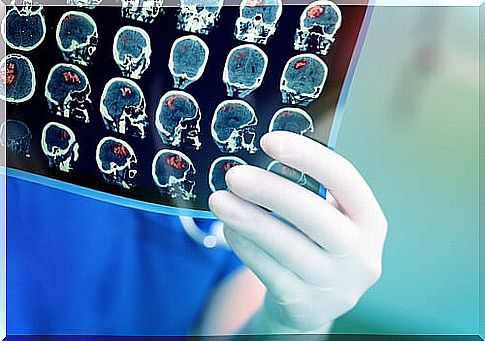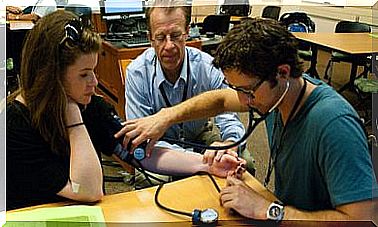Hemorrhagic Stroke: What Are Its Risks?
Hemorrhagic stroke, or cerebrovascular accident, is a leading death as well as disability worldwide. Its prevention and early diagnosis are very important to avoid the consequences. Here we tell you some information that is interesting to know about them.
What is hemorrhagic stroke?
A stroke is the sudden stoppage of blood flow in an area of the brain. It can occur due to the blockage of a cerebral artery or vein, which would be called ischemic stroke, or by the rupture of a blood vessel.
It is this case of a ruptured vessel which is known as a hemorrhagic stroke. Hemorrhagic strokes are only 10-15% of all strokes that occur. The damaged vessel begins to bleed, producing a cerebral hemorrhage, and the territory after that rupture, which received blood and was nourished by that vessel, is left without irrigation.
That an area of the brain is left without irrigation causes all the cells that make up this tissue to begin to lack oxygen and lose the ability to function, eventually dying. In addition, the hemorrhage itself that forms compresses other brain areas, putting these cells at risk as well.
This is why, the longer an area passes without blood supply, the more serious the consequences will be. It is very important to know how to quickly recognize the symptoms that a stroke can cause in order to act accordingly and minimize the risk of sequelae.
Stroke is an emergency situation, before which the health services activate an action protocol. The aim is to diagnose and treat it as quickly as possible to avoid serious consequences, and even the death of the patient.

What are your symptoms?
Stroke symptoms can appear little by little, but the most common is that they appear abruptly and quickly get worse. Some of them are:
- Weakness of a part of the body or loss of the ability to move it.
- Loss of sensation or tingling sensation.
- Decrease or loss of total or partial vision.
- Difficulty speaking
- Inability to recognize or identify familiar things.
- Sharp and sharp headache.
- Dizziness
- Loss of coordination
- Difficulty to swallow.
- Feeling sleepy, drowsy, and even eating.
- Confusion or memory loss
Risk factors for hemorrhagic stroke
Hemorrhagic stroke occurs, most of the time, in people with damaged or damaged blood vessels. There are risk factors that will be permanent and others that will depend on the person’s lifestyle. Some of the factors that can increase the risk of brain hemorrhage are:
- Malformations of the blood vessels of the brain, such as cerebral aneurysms or arterio-venous malformations. These disorders make the vessels more delicate and more prone to rupture.
- Hypertension. People with uncontrolled arterial hypertension are at greater risk of a vessel rupturing, since they bear greater pressure on their walls due to the blood they contain.
- Smoking Tobacco causes the walls of the blood vessels to lose elasticity, making them more susceptible to breaking under any change.
- Diabetes. People with diabetes also have damaged and weakened blood vessels.
- Unhealthy diet, overweight and obesity.
As can be seen, many of these factors are modifiable with a healthy lifestyle. As always, it will be advisable to carry out physical exercise and a diet controlled in terms of fat, alcohol and other harmful substances.

Act quickly in the face of hemorrhagic stroke
Stroke is one of the leading causes of death, especially in developed countries. It is also a great generator of acquired disability. As we have already mentioned, it is very important to recognize the signs that it can produce as soon as possible, in order to act quickly and be able to avoid the consequences.
When you act and treat quickly, even if some of the tissue has died, another part can be recovered. With rehabilitation, many of the functions that had been lost return to normal. It is therefore essential to notify the emergency health services when a stroke is suspected.









